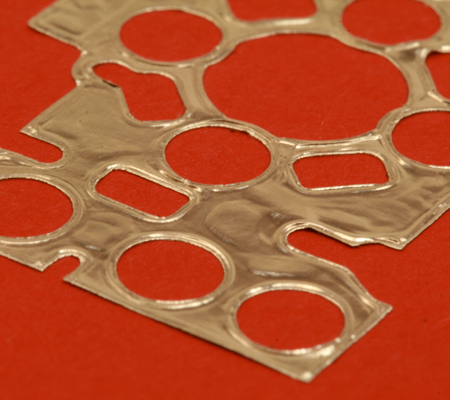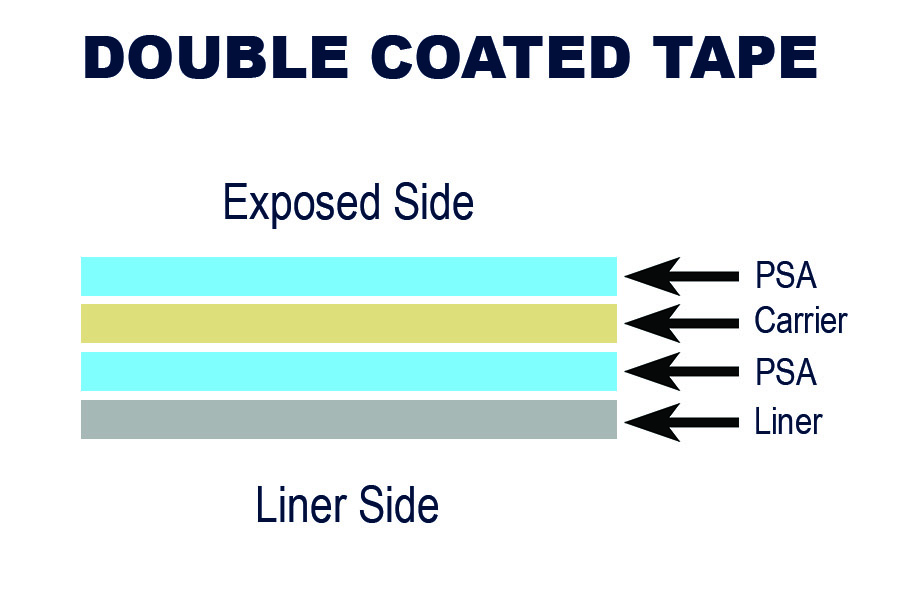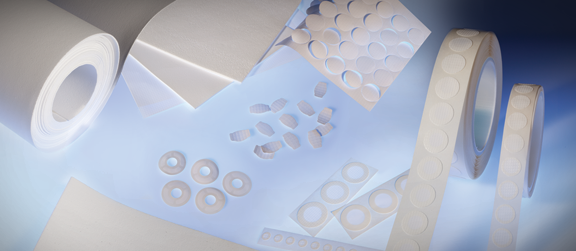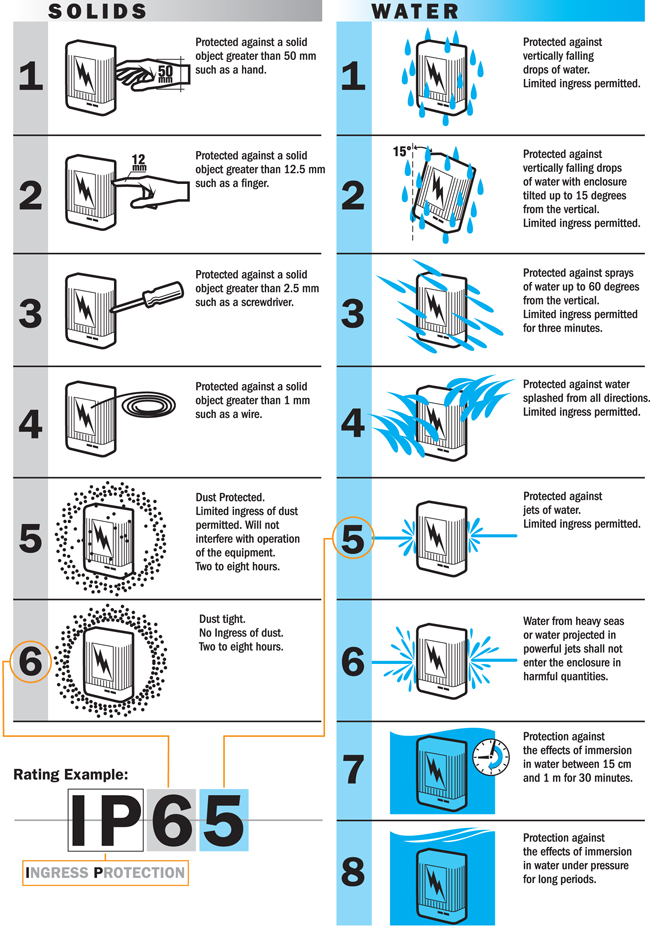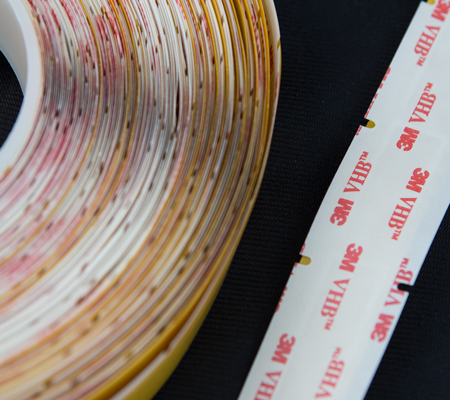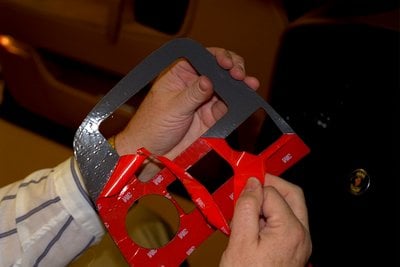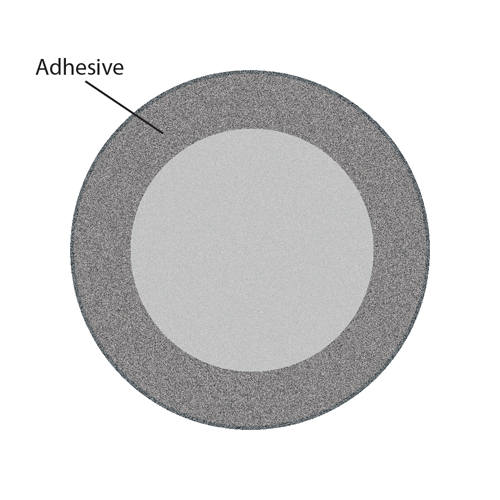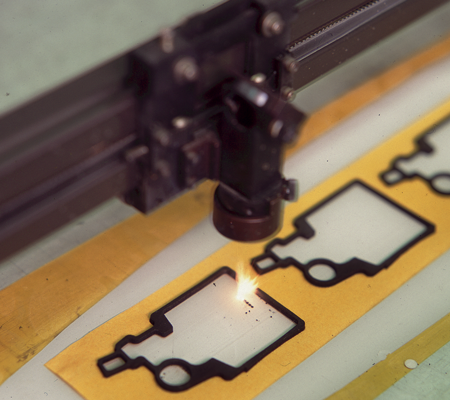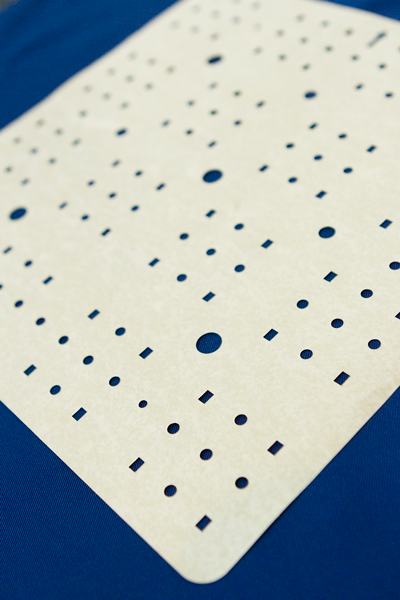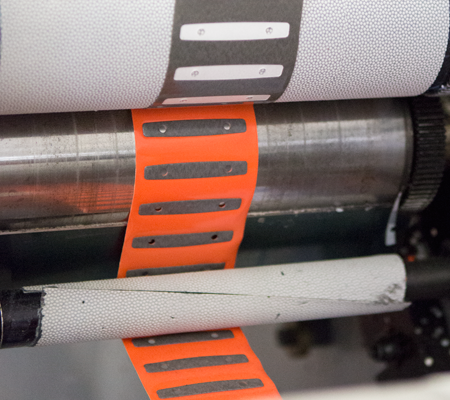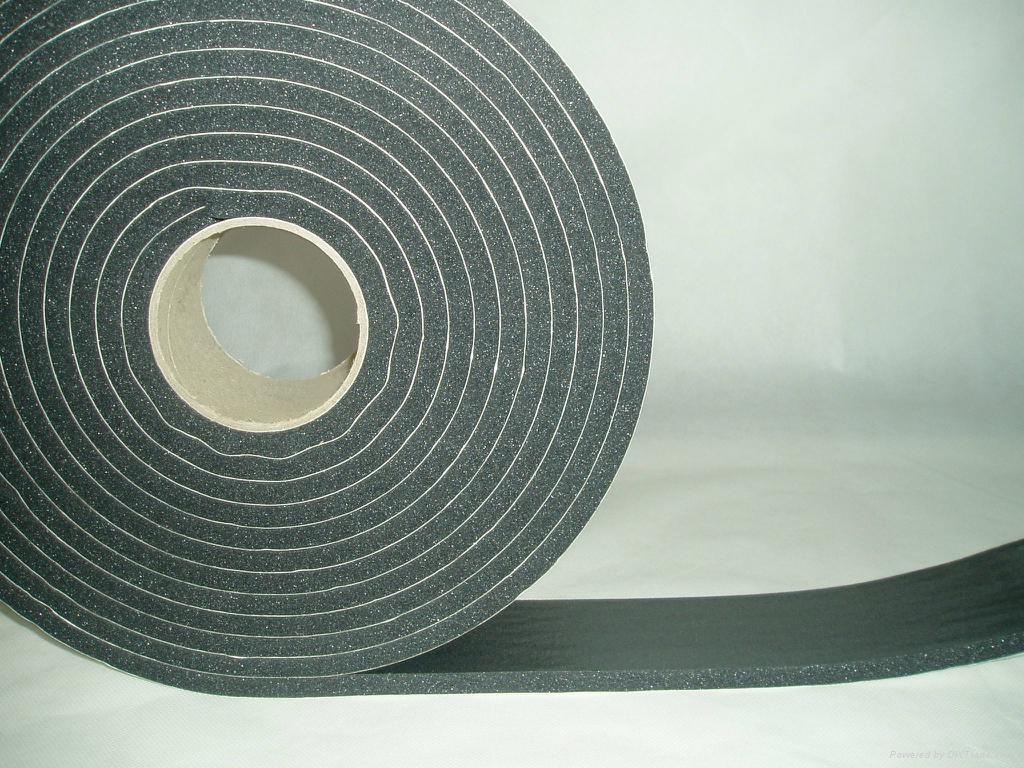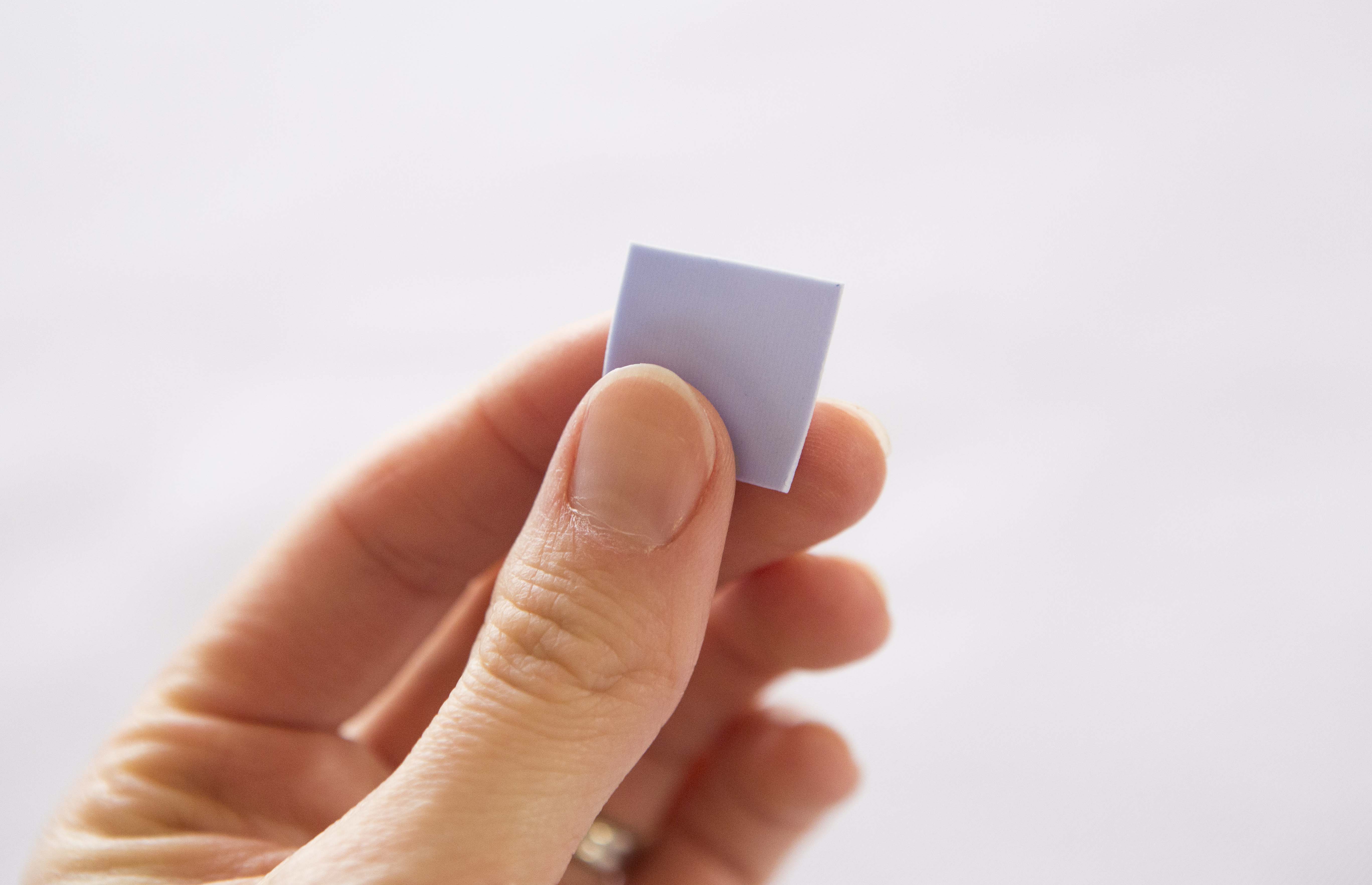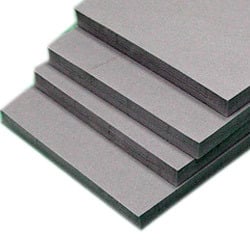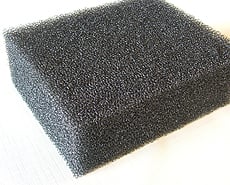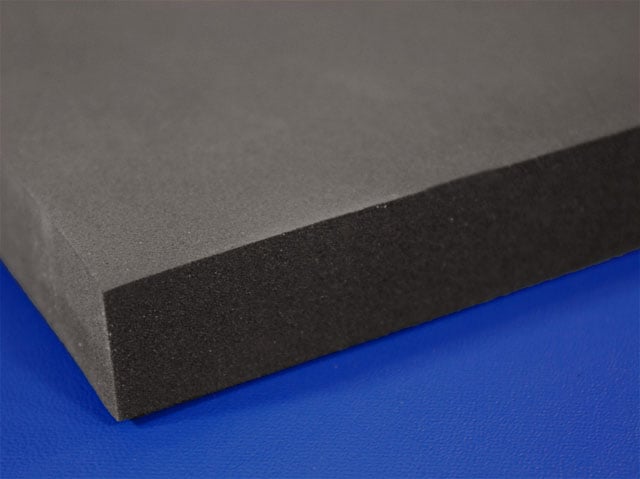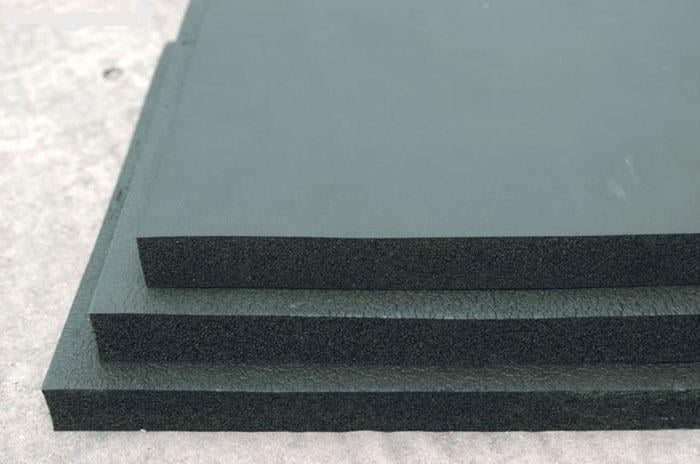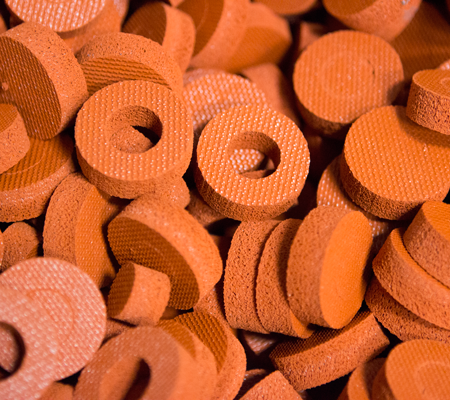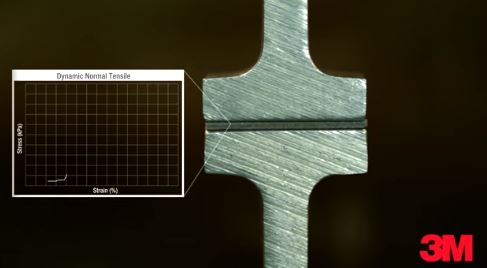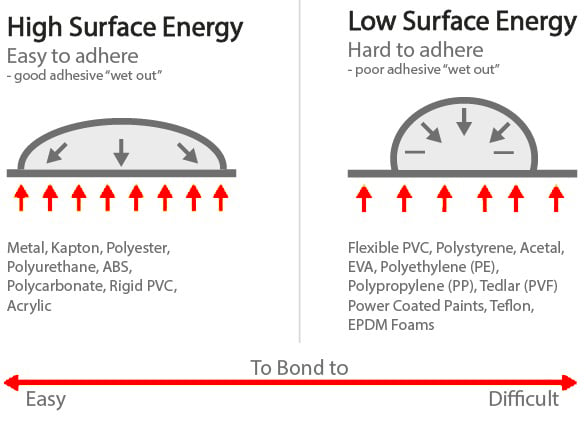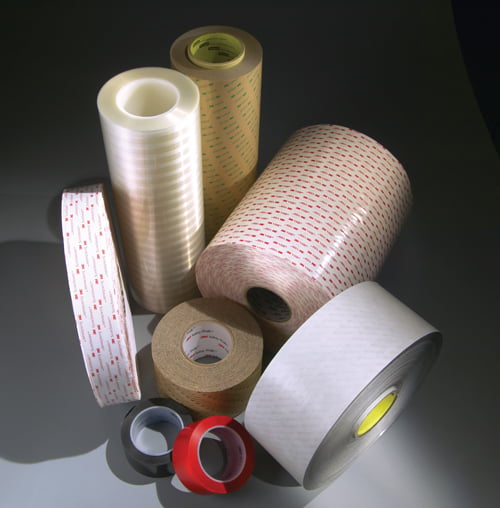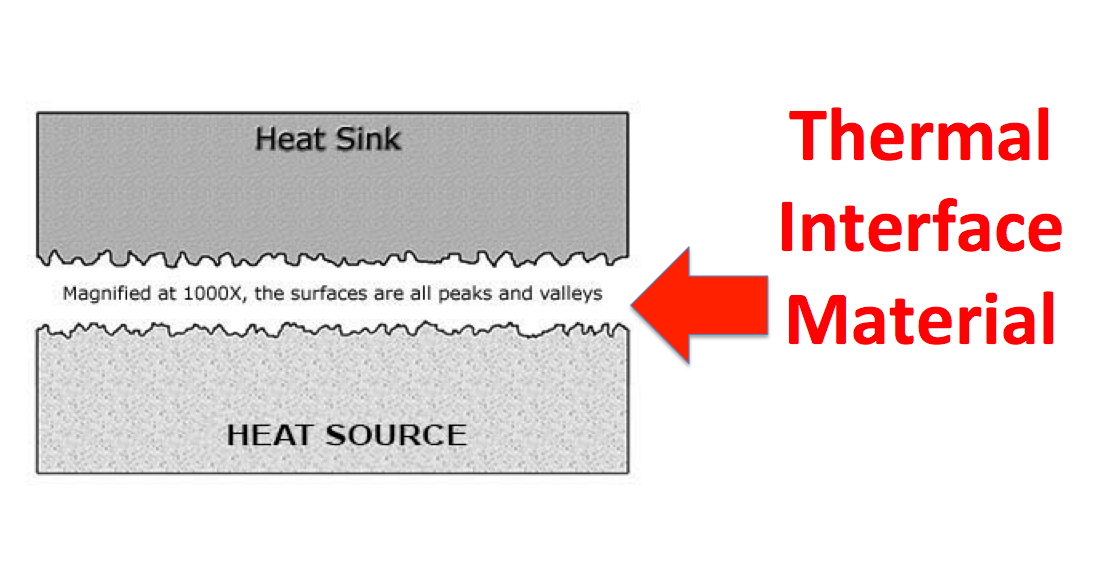Katie Sullivan
Recent Posts
Heat Spreaders: Hot Summer Blog Series - Thermal Interface Materials
Posted by Katie Sullivan
July 13, 2015 10:37 AM
Topics: Thermal Management, 2015 Summer Blog Series: Thermal Management
Phase Change Materials - Hot Summer Blog Series: Thermal Interface
Posted by Katie Sullivan
June 25, 2015 2:07 PM
Phase Change Materials
This is the second post in our Hot Summer Blog Series about Thermal Management Materials. In this post, we will focus on phase change materials.
Topics: Thermal Management, 2015 Summer Blog Series: Thermal Management
Thermal Gap Pads - HOT Summer Blog Series: Thermal Interface Materials
Posted by Katie Sullivan
June 3, 2015 2:14 PM
This is the kick-off to our Hot Summer Blog Series all about Thermal Management Materials.
Why focus on Thermal management Materials? Incredible technological advancements have been made over the past 30 years in electronic devices. Just look at the image below.
As devices have become smaller, thinner, and more powerful, the need for the efficient removal of heat has become critical to the reliability and longevity of the device. Heat is a normal by-product of electronics operation. Thermal Management Materials exist to aid in the efficient conduction of heat within these devices to keep them running at a safe operating temperature. There are many different types of Thermal Management Materials offering a range of conductivities, thicknesses, and softness. In this series, we will explore the different types, starting off with Thermal Gap Pads.
Topics: Thermal Management, 2015 Summer Blog Series: Thermal Management
Pressure Sensitive Adhesive Tape Constructions - Die Cut Tapes
Posted by Katie Sullivan
May 15, 2015 9:54 AM
The use of pressure sensitive adhesives is growing rapidly in the industrial manufacturing market. The advantages of using adhesive tapes are clear: they are lightweight, clean, and safe. Marian has the converting capabilities to produce die cut tapes, which are cut to specific dimensions. Tapes are often combined with, or laminated to other materials such as foam or film to create a more dynamic die cut part.
Topics: Pressure Sensitive Adhesive
Vents for IP-rated Enclosures - POREX® PTFE Membrane
Posted by Katie Sullivan
April 16, 2015 10:07 AM
As explained in the previous blog post - IP Ratings Explained - an Ingress Protection (IP) Rating is a common international test method (IEC 60529) to rate enclosure protection from objects and liquids. IP67 refers to the most extreme IP rating certifying that the enclosure will protect against the entry of:
- dust (6)
- the effects of immersion in water to depth between 15cm and 1meter for 30 minutes (7).
In other words, IP67 means that the unit or enclosure can be dropped into a body of water up to a meter deep for half an hour without allowing the ingress of water or dust!
For more information about IP Ratings, and to download an IP Ratings Chart, visit our webpage: IP Rating and NEMA Rating Charts
Topics: IP Rating
Ingress Protection (IP) Rating is a common international test method (IEC 60529) to rate enclosure protection from objects and liquids.
Why is an IP Rating Important?
UL, CSA and CE Mark Standards often require certified products to hold a specific IP rating. Some examples of such products include IT equipment, laboratory equipment, electronic measurement equipment, plus anything claiming to be "dust tight" or "water-resistant", etc.
These terms indicate that a device is able to operate successfully in harsh environments such as potentially wet and dusty conditions. The IP rating scale provides a range of two numbers that indicate the level of protection provided.
The IP Rating looks like this: IPXX
1. The first number indicates protection from solid objects or materials
2. The second number indicates protection from liquids
For example, an enclosure that is rated IP54 is dust-protected. It will allow limited ingress of dust with the operation of the equipment for 2 to 8 hours. The enclosure is also protected against water splashed from all directions; limited water ingress permitted.
Before choosing materials for an IP-rated enclosure, it's important to understand the conditions and forces your application will encounter.
Topics: Pressure Sensitive Adhesive, Foams, IP Rating
Die-cut foam tape can be an excellent choice for your bonding application. With help from our friends at 3M, here are the top 10 reasons to choose acrylic foam tape versus mechanical fasteners.
PORON® AquaPRO™ 37 - SOFT Foam, Water Sealing Solutions
Posted by Katie Sullivan
February 10, 2015 10:30 AM
Sealing out moisture can be one of the most important design features of a product. Water ingress, even just a drop, can cause substantial and irreparable damage to electronics, sensors, and other sensitive components.
This is why we are excited to tell you about a new high-performance foam material from Rogers Corporation. The newest addition to the Rogers line of foam products, the AquaPRO™ family provides enhanced water sealing solutions. Material densities range from "soft" (41) to "very soft" (37). This new Poron formulation is available in a range of thicknesses.
What There is to Know About Tape Primers
3M recently launched two high-performance acrylic foam tape lines for the automotive market: EX4500 and PX5000.
3M tape primers are applied to the bonding surface prior to the application of the tape. Primers are often made of chemicals like isopropyl alcohol and promote and increase adhesion.
Topics: Pressure Sensitive Adhesive
Zoned adhesive lamination describes the process of laminating a selective pattern of PSA (pressure-sensitive adhesive) onto another material to achieve a specific function. Simply said, this process involves manufacturing a multi-layer part in which the layers have different geometries. This occurs through a process of conversion - laminating materials together, precisely die cutting those materials, and pulling away from the unwanted PSA material from the finished part.
Zoned adhesive patterns are often required for filter and venting die-cut components and often include a PSA layer. As you can see in this image, the mesh is cut into a circle while the adhesive is cut into a ring, which allows air and sound to flow through the center of the mesh.
Topics: Pressure Sensitive Adhesive
Tape for Permanent Mounting AND/OR Temporary Fixation. Is that possible!?
How can an adhesive tape have an extremely high bonding strength while also being easily removable? Seems improbable, right? Let us introduce you to the tesa® Bond & Detach series of stretch release tapes.
Topics: Pressure Sensitive Adhesive
Marian Europe: 5 Things You Need to Know About Our Facility
Posted by Katie Sullivan
December 4, 2014 9:12 AM
Laser cutting is one of many manufacturing capabilities offered by Marian. Laser cutting is a technology that uses a laser beam to cut or etch the shape of a specific design. Laser cutting utilizes CNC (computer numerical control) and/or laser optics to precisely control the pattern being cut in the material.
Rapid Production
There are no tooling requirements or costs for laser cutting. We can utilize a CAD file (.dxf) to produce parts very quickly. If materials are in stock, we can produce parts within 24 hours. This can be very helpful during the prototype and design phases. We can utilize the laser the create small volumes of parts for testing and evaluation.
Topics: manufacturing techniques
3M™ FRB contains unique properties and has the ability to enhance your applications.
The 3M™ Flame Barrier FRB Series is thin, flexible insulation made primarily of inorganic materials and is used in thermal management applications. FRB provides very high flammability and ignitability resistance, excellent arc and track resistance, good dielectric strength, and good thermal performance to safely contain electrical hazards. When compared to other material options, FRB saves cost and weight in end-use applications.
This thermal management material is easily converted: slit, die-cut, and/or laminated to fit the requirements of your specific design.
Key Material Characteristics
Topics: Thermal Management
What is Die Cutting?
DIE CUTTING, by simple definition, is the process of using a die to shear webs of low-strength thin materials, such as rubber, foil, cloth, paper, films, pressure-sensitive adhesive tapes, and foam. Commonly produced items include gaskets and labels.
Worldwide, Marian has one of the largest "fleets" of die cutting machines. Our highly trained design, electrical and mechanical engineers manufacture our die-cutting equipment in-house in two well-equipped machine shops. We have been die cutting for over 50 years. We are very proud to be industry experts and offer our "die cutting 101" below.
Particle-Filled Silicones for EMI Shielding and Environmental Sealing
Posted by Katie Sullivan
October 27, 2014 11:00 AM
Particle-filled silicone are elastomeric compounds that combine the advantages of silicone with electrical properties of metals. Conductive silicone materials can include the following filler materials: nickel, graphite, silver, copper, and aluminum.
Particle-filled silicone materials provide shielding against electromagnetic interference (EMI) and radio frequency interference (RFI). Silicone in itself boasts a number of tremendous properties, including high performance at extreme temperatures (-50°C - 350°C), durability and abrasion resistance, chemical stability, and electrical insulation. This combination of features makes particle-filled silicone materials ideal for EMI seals and gaskets in a range of applications and industries, including the demanding applications of the military and aerospace industries.
Some designers have concerns about using particle-filled silicone. Silicone has desirable material properties, but loading a high percentage of particle filler into the rubber in an effort to increase conductivity can result in negative tradeoffs. Typically, industry professionals worry that particle filled electrically conductive silicone will exhibit the following negative material features:
- too hard
- too brittle
- too expensive
- have long lead times
- limited by mold size dimensions
- not thin enough for newer, thinner designs
Topics: EMI Shielding
PVC (Vinyl) Foam is the last foam variety that we will explore in our blog series "Foams for Low Clamping Force Seals". Polyvinyl Chloride (PVC) Foam is a lightweight closed-cell foam material. It is often used for sealing out water, dirt, and air. It resists weathering and is often laminated with adhesive to create a dynamic foam tape.
Topics: Foams, Foams for Low Clamping Force Seals
Within electronics assemblies, thermal gap pads and thermal grease are utilized to fill in gaps between a heat-generating component and a heat sink to create a clear pathway for heat to escape, keeping the device running at an optimal temperature. So which thermal interface solution is right for your application? To aid in your decision, we list a few pros and cons to both thermal gap pads vs. thermal grease.
Thermal pads
Thermal pads, also known as thermal gap fillers and thermal gap pads, are a pre-formed rectangle or square of solid material. Thermal gap pads are often made of silicone or acrylic that contains a conductive filler. The advantages of thermal gap pads are that they have excellent dimensional stability, which makes them easily die-cut to achieve a consistent shape with each pad. The electronics manufacturer knows exactly what they are going to put into each assembly. The solid thermal gap pads are easy to handle, mess-free, and simple to install, leaving less room for assembly error.
Want to learn more about thermal gap pads? Check out this blog post: The Best Thermal Gap Pad for your Design
Topics: Thermal Management
XLPE Foam or Cross-linked Polyethylene Foam is the next material we will explore in our blog series, Foams or Low Clamping Force Seals. XLPE Foam is an extremely fine closed-cell material formed of polymers or molecules that are chemically bonded together (cross-linked). The strength of these microcellular molecule bonds is reflected in the strength of the material. XLPE foam can stretch, bear loads, and return to its shape. It works well in insulation, gap filling, and gasket applications that require thicker foam. It can also be used for packaging and medical device packaging. It can be made in a variety of colors, the most common being black, white, and gray.
Topics: Foams, Foams for Low Clamping Force Seals
Light Density Polyester or Polyether Urethane Sponge or Foam
Posted by Katie Sullivan
September 26, 2014 9:30 AM
Light Density Polyester and Polyether Urethane Sponges and Foams have an open cell structure. The evenly spaced structure of these materials and a high proportion of open cells make them suitable for an infinite number of applications. The open-cell structure makes it highly flexible and conformable compared to its closed-cell counterpart.
Check out a related blog post: Open-Cell or Closed-Cell Foam, Which is Best?
Topics: Foams, Foams for Low Clamping Force Seals
As we explore different categories of foams that are used for Low Clamping Force Seals in this blog series, we move to Closed Cell Neoprene and Sponge Blends. As stated in the previous post, closed-cell sponge and foam materials do not allow air and moisture to pass through, making them good materials for general sealing and gasketing applications. Keep reading for additional features and benefits of these materials.
Topics: Foams, Foams for Low Clamping Force Seals
What is Closed Cell EPDM Sponge?
Closed Cell EPDM Sponge is the third material we will explore in our blog series: Foams for Low Clamping Force Seals. EPDM stands for Ethylene Propylene Diene Monomer. "Closed Cell" describes the material at a microscopic level. The material is made with tiny bubbles that are inflated with gas, resulting in a closed cell structure that will not allowing moisture to pass through. This is what makes this material excellent for sealing and gasketing. EPDM is commonly used in the automotive and construction industries for various seals and gaskets due to its excellent environmental factors such as UV, Ozone and weathering. When comparing EPDM to Silicone, EPDM falls short when it comes to temperature resistance.
Features and Benefits of Closed Cell EPDM Sponge
- Non-crystalline material. Contains no plasticizers that can migrate and lead to premature membrane failure.
- Can be formulated in a variety of combinations with other polymer modifiers.
- Performs well in the -40°F to 175°F temperature range.
- Excellent moisture resistance, does not absorb fluids easily
- Used in many applications that require water, UV, ozone, or indirect sunlight resistance (superior to neoprene in this regard)
- Does not meet UL flame rating without additives and will not withstand oil and fuels.
Topics: Foams, Foams for Low Clamping Force Seals
We are continuing with our blog series: Foams for Low Clamping Force Seals. This week we will review the features and benefits of Microcellular Urethane Foam. Along with the many benefits this foam offers for low clamping force seals, it die-cuts cleanly and adheres to a broad range of pressure sensitive adhesives.
Topics: Foams, Foams for Low Clamping Force Seals
Adding a gasket to seal a device, whether it is keeping out dust, air, water, or something else, seems like it would be an easy part of the design. However, there are many material options available for most gasket applications. Choosing the best material may require some research. This is why we are starting a blog series outlining the features and benefits associated with the various foams that fit into this large subset of gasket material options: Foams for Low Clamping Force Seals
We are starting this series with SILICONE FOAM.
Topics: Foams, Foams for Low Clamping Force Seals
Rogers PORON® Microcelluar Urethanes are tried and true materials for gaskets and seals. With excellent compression set resistance, this line of foam materials is easy to convert. They die-cuts cleanly and securely adhere to a broad range of pressure-sensitive adhesives.
UL-94 V-0 Flammability Rating
Product designs of the future are required to meet increasingly rigorous specifications with safety in mind. One of these requirements is often a UL-94 V-0 flammability rating. UL 94 is a plastics flammability standard released by Underwriters Laboratories (UL) The standard classifies plastics according to how they burn in various orientations and material thicknesses. The UL V-0 classification means that burning stops within 10 seconds on a verticle part allowing for drops of plastic that are not inflames.
Why is this important? More and more products across every industry include high-performing electronics. These electronic components generate heat. It is important that materials that are designed into these products meet specific material standards, such as UL94 V-0. In particular, the HEV market requires advanced sealing performance while meeting very rigorous specifications for passenger safety. Visit our webpage that describes the solutions we provide for Electronic Vehichles.
Rogers has recently released PORON® 4701-V0-M, which is specifically formulated to meet all requirements under UL94 for both V-0 and HBF flammability ratings.
Topics: Foams
When selecting a pressure sensitive adhesive for your die-cut tape, there are many characteristics to consider. Tapes have varying degrees and even different varieties of peel strength. Peel strength, tensile strength, and shear strength of a tape are each measured utilizing specific tests, as shown in the video demonstrations below.
When choosing a PSA for your application, you will want to consider the different types of adhesion strength and determine which are the most important to your application’s proper function.
Topics: Pressure Sensitive Adhesive, Peel Strength
Over the years, the use of pressure sensitive adhesive tape has grown rapidly in manufacturing and practically all other industries. This means a growing number of design engineers are learning about and sourcing pressure sensitive adhesives for their application. Adhesive selection is an involved process is to determine the surface energy of the two substrates that are being bonded.
WHAT IS SURFACE ENERGY?
Are you designing a product or working on an application that requires a double-sided tape or transfer adhesive? There are infinite amounts of tape materials available with different adhesive types, carrier types, and constructions. We understand that it can be overwhelming to look through numerous catalogs of pressure-sensitive adhesive products to determine which one will work best in your application. Therefore, we have come up with a checklist of only 4 questions that will help you narrow down the most important factors in your decision. Some factors to start with when selecting a PSA material include:
- Required function of the PSA (i.e.: bonding, sealing, skin contact)
- Substrate surface energy (is the bonding surface high surface energy, low surface energy?)
- What type of stress will be exerted on the PSA? (shear stress, pluck stress?)
- What other conditions will the PSA be exposed to? (high/low temperatures, solvent & liquid exposure, visual appearance)
Topics: Pressure Sensitive Adhesive
When you first hear the term “thermal interface material” it sounds like the latest fabric invented by Patagonia for their new line of long-underwear. Little may you know, these materials are critical components found in the many electronics, lighting, and battery operated devices you use everyday.
Why Are Thermal Interface Materials (TIMs) Needed?
Topics: Thermal Management

